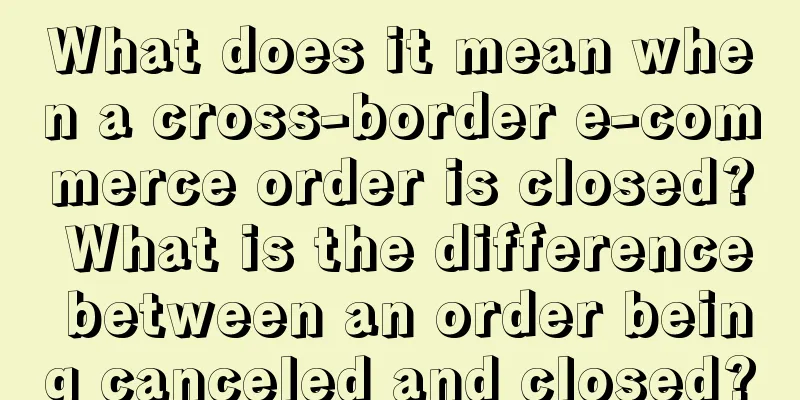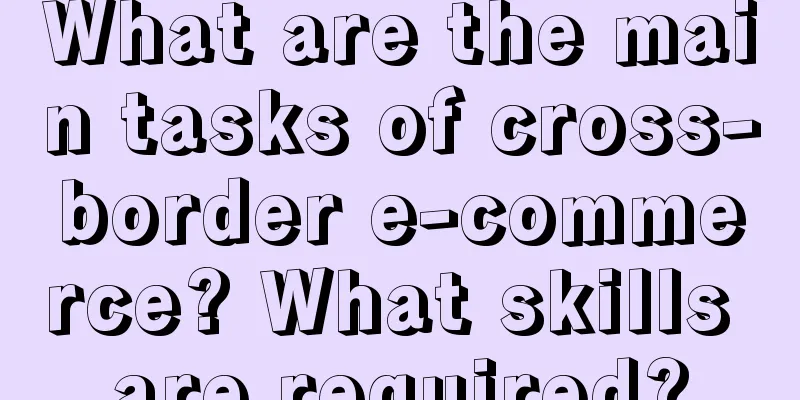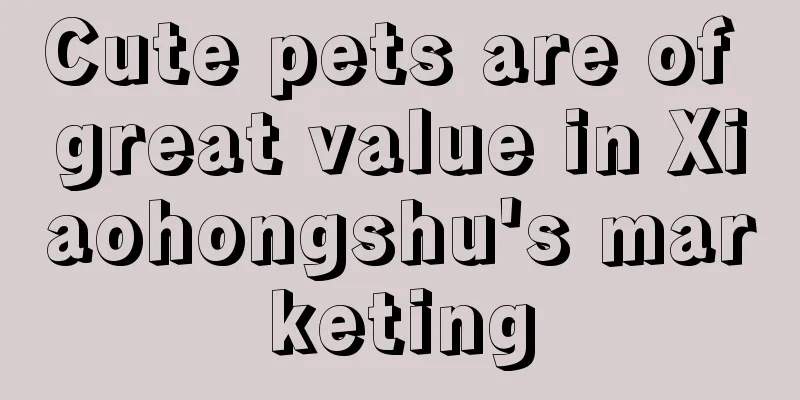What does it mean when a cross-border e-commerce order is closed? What is the difference between an order being canceled and closed?

|
In cross-border e-commerce, sellers and buyers often encounter order closures, but what does this really mean? This article will delve into the meaning of cross-border e-commerce order closures and the difference from order cancellations, providing sellers and buyers with a clear explanation and handling method. 1. Meaning of order closing Order closure refers to the situation in which an order cannot be completed normally due to some reason during the transaction process and is eventually closed by the system. Order closure may be triggered by the seller, buyer or the system automatically. The reasons vary, but its meaning usually includes the following aspects: Buyer cancels order: After placing an order, the buyer has the right to cancel the order within a certain period of time. If the buyer makes a cancellation request within the specified time and the seller agrees, the order will be closed. Seller cancels order: In some cases, the seller may need to cancel the order, such as out of stock, wrong price, etc. If the buyer agrees or does not respond in time, the order will be closed. Payment issues: If the buyer fails to complete the payment within the specified time after the order is generated, the system may automatically close the order. This usually happens when an online payment method is selected but the payment is not successful. System risk control: In cross-border e-commerce platforms, the system will conduct some risk monitoring. If abnormal or high-risk transactions are found, the system may close the order to ensure the security of the transaction. Transaction disputes: If a transaction dispute occurs between a buyer and a seller, the system may close the order after certain mediation and processing. Closing an order does not necessarily mean there is a problem or dispute; it can be a means of handling the situation in a normal trading process. 2. What is the difference between canceled and closed orders? In cross-border e-commerce, order canceled and order closed are two common statuses, but they have some subtle differences, mainly reflected in the following aspects: Cancelled entity: A canceled order is usually requested by the buyer or seller and executed after the other party agrees. A closed order may be automatically closed by the system or by the intervention of platform personnel. Time of Cancellation: Orders are usually cancelled at the initial stage of the transaction or when the goods have not been shipped, while orders may be closed at any stage of the transaction, including when they have been shipped but need to be closed for some reason. Reasons for closure: An order may be closed due to a variety of reasons, including payment issues, system risk control, transaction disputes, etc. An order may be cancelled because the buyer and seller agree on certain matters of the transaction, or because of the buyer's subjective reasons for canceling the order. Transaction status: A canceled order usually means that the transaction has not entered the actual stage of commodity circulation, while a closed order may occur when the goods are shipped, waiting to be received, or completed. Knowing the difference between an order being canceled and an order being closed is important for both sellers and buyers. When dealing with transaction disputes or cancellation requests, clarifying the order status can provide a better understanding of the transaction process. 3. How to handle order closing When sellers or buyers encounter order closures, they can take appropriate measures based on the specific reasons: Communication and negotiation: Both parties can communicate through the platform's messaging system to understand the reasons for the closure and negotiate if necessary. Some problems may be caused by misunderstandings and can be resolved through timely communication. Follow platform regulations: Cross-border e-commerce platforms usually have clear regulations and policies to handle order closures. Sellers and buyers should follow the platform regulations. Provide evidence: If the closure is due to a dispute or complaint, both parties can provide relevant evidence to support their claims. This may include transaction records, chat records, product photos, etc. Handle problems promptly: If an order is closed due to the seller's own reasons, such as out of stock, price error, etc., the seller should handle the problem in a timely manner to minimize the occurrence of order closures. Learning experience: Different order closures may be an experience accumulation for both sellers and buyers. Both parties can summarize the experience after dealing with the current problem so as to better deal with similar situations. Through rational communication and reasonable negotiation, the issue of order closure can be properly resolved, which will also help improve the trading experience of both parties on the platform. |
<<: What are the categories of cross-border e-commerce? What does cross-border e-commerce do?
Recommend
Xiaohongshu replaces "Zhang Xiaohui" with store broadcast
Can the store broadcast strategy help to gain a he...
Four hardcore ways to make money with IP on video accounts
This article starts from the perspective of self-m...
In the short video business war, you have to be able to twist
The "subject three" dance skills of the ...
How does Shopee Logistics deliver goods? Is there a time limit?
There are many merchants on the Shopee platform wh...
Live broadcast rooms are "fighting" for Messi, who can take over the traffic of the "King of Football"?
Now all major platforms have introduced top resour...
Crazy Thursday, can you still afford it?
It's Thursday again. Has anyone sent you a mes...
Five new underlying changes in brand equity
This article revolves around the concept of brand ...
20 trends and thoughtful suggestions for brands in 2023
2023, the new year's brand forecast is here! T...
How to transfer warehouses on Amazon? How to calculate the transfer fee?
When running an Amazon store, if there is too much...
Chiikawa craze among young people: from emojis to "plastic surgery"
Chiikawa, with its cute image and unique worldview...
eBay sneaker sellers will get FedEx shipping labels
eBay US announced that it will work with FedEx to ...
How to prevent price comparison on Pinduoduo and why to do it
For merchants, how to effectively prevent price co...
Is the Amazon trademark registered with an individual or a company? How to register?
When you open a store on Amazon, you will want to ...
Ranked 6th in the world and 1st in China, a 4,000-word article deeply analyzes Huazhu's marketing secrets
The rejuvenation of the hotel industry has also br...
How to measure the effectiveness of APP overseas KOL marketing? Do you know these 5 indicators?
We have briefly learned about APP going overseas a...









